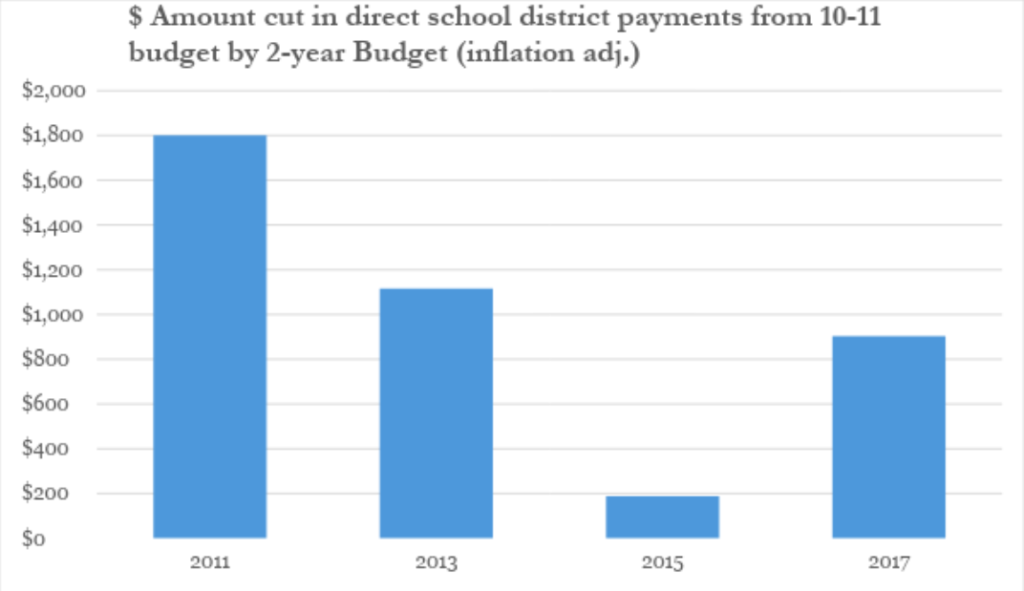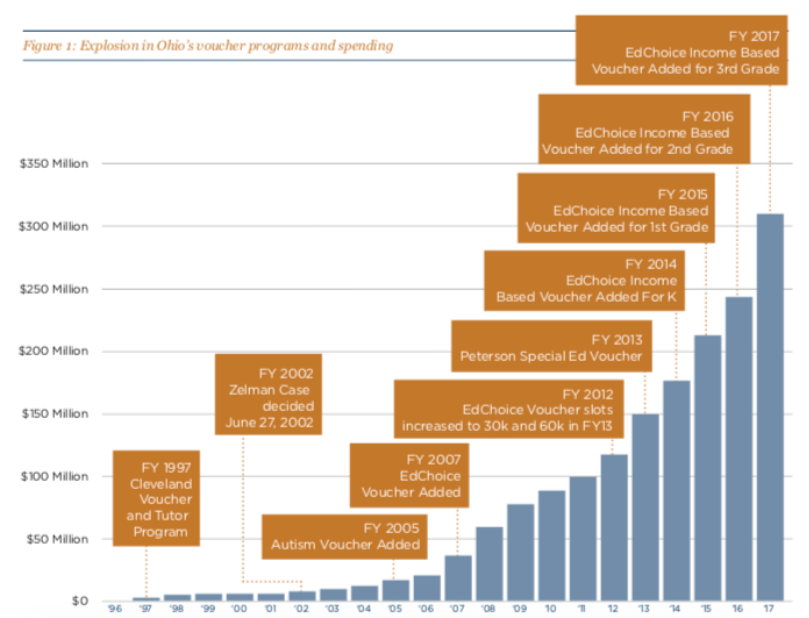Read the full analysis of the Ohio budget through a gender lens on the Ohio Women’s Public Policy Network’s website.
Ohio’s new two-year state operating budget brought numerous improvements for the livelihood of women, but that’s not to say there weren’t plenty of drawbacks and lack of action on key issues as well.Progress was made to improve the quality of childcare in Ohio. But there’s more work to be done.
 The new state budget allocates $198 million to improve the quality of Ohio’s publicly funded childcare system. This increase in funding will allow improvements in ensuring that workers within the childcare sector are paid fair wages, and will also help to facilitate professional development and facility improvements.
Where the budget falls short is allocating resources to increase the access and affordability of childcare. By increasing the accessibility of childcare, children would enter school well prepared, and parents would have the opportunity to participate in the workforce. While the DeWine Administration stated that increasing eligibility for childcare was a policy priority, ultimately no funds were allocated to support this endeavor.
The new state budget allocates $198 million to improve the quality of Ohio’s publicly funded childcare system. This increase in funding will allow improvements in ensuring that workers within the childcare sector are paid fair wages, and will also help to facilitate professional development and facility improvements.
Where the budget falls short is allocating resources to increase the access and affordability of childcare. By increasing the accessibility of childcare, children would enter school well prepared, and parents would have the opportunity to participate in the workforce. While the DeWine Administration stated that increasing eligibility for childcare was a policy priority, ultimately no funds were allocated to support this endeavor.
After attempts to restrict access to Medicaid via the inclusion of the “Healthy Ohio” Program in the budget, Medicaid services were ultimately left unharmed.
The provision of the so-called Healthy Ohio Program would have required premiums to access Medicaid, which would have had crucial implications on women, who comprise more than half of Ohio’s Medicaid population. Medicaid has long been a lifeline for women, and the legislature’s decision to ultimately remove the “Healthy Ohio” language was crucial to protect access to the program.Progress was made towards addressing wage theft, an issue that faces many working-class Ohioans, particularly women and people of color working in low-wage jobs.
When workers are paid less than they were contractually promised, it is known as wage theft. Whether it be through violation of minimum-wage laws, not getting paid overtime, or forcing an employee to work off-the-clock, Ohio clocks in with the second-highest amount of wage theft among the ten largest states. Additional funding was allocated to the Ohio Bureau of Wage and Hour to help address this issue.The state budget also codified some policies that we expect to negatively impact Ohio women and working-class families.
By continuing to support a business tax cut known by many public service advocates as the “L.L.C. loophole,” Ohio loses out on about $528 million per year or $1.1 billion for the duration of every state operating budget where it remains intact. There is little evidence to suggest that this tax break for L.L.C.s has created any significant number of new jobs in the state. Ohio is missing out on billions of dollars of revenue that could have been allocated towards programs to address our school funding crisis, increase childcare assistance eligibility, or invest in a refundable Earned Income Tax Credit (which we’ll discuss in just a moment), to name only a few ways this money could be better spent.There were also some issues facing Ohio women and their families that the state budget failed to address, entirely.
Ohio’s Earned Income Tax Credit remains non-refundable.
One of these crucial areas of inaction was the budget’s failure to make Ohio’s Earned Income Tax Credit (E.I.T.C.) refundable, a policy that would have given a major economic boost to low-income families across the state.Nationally, the E.I.T.C has been crucial in lifting working families out of poverty. However, it is not without its limitations here in the state. The greatest shortfall of Ohio’s state E.I.T.C. is that it is non-refundable. If this gap in anti-poverty policy had been addressed, the state budget would have been able to put money back into the hands of working families..@PolicyMattersOH led the charge to advocate for a refundable state #EITC during the state operating budget process.
Unfortunately, lawmakers did not answer the call, and Ohio’s state EITC remains non-refundable. #OHBudget — Women’s Public Policy Network (@OhioWPPN) September 10, 2019
Despite the 2020 Census being right around the corner, the bill allocated no funding towards planning or conducting a complete census count in the Buckeye state.
About $33 billion dollars in federal funding rests upon the outcomes of the U.S. Census, which determines how those federal dollars are dispersed, state-by-state. Without a correct and complete count, the well-being of women and historically undercounted communities, populations which rely heavily on these federal grant dollars, are undermined.No efforts were made to create a framework for statewide paid family leave.
 Paid family and medical leave policies allow workers to address the needs of their families or their own health without risking their financial health. Currently, only 17% of American workers have access to paid leave through an employer, but lawmakers made no effort through the state budget to increase those statistics here in Ohio… To learn more about the push to bring paid family leave in Ohio, check out the Women’s Public Policy Network’s Paid Leave Advocacy page on their website.
Paid family and medical leave policies allow workers to address the needs of their families or their own health without risking their financial health. Currently, only 17% of American workers have access to paid leave through an employer, but lawmakers made no effort through the state budget to increase those statistics here in Ohio… To learn more about the push to bring paid family leave in Ohio, check out the Women’s Public Policy Network’s Paid Leave Advocacy page on their website.



